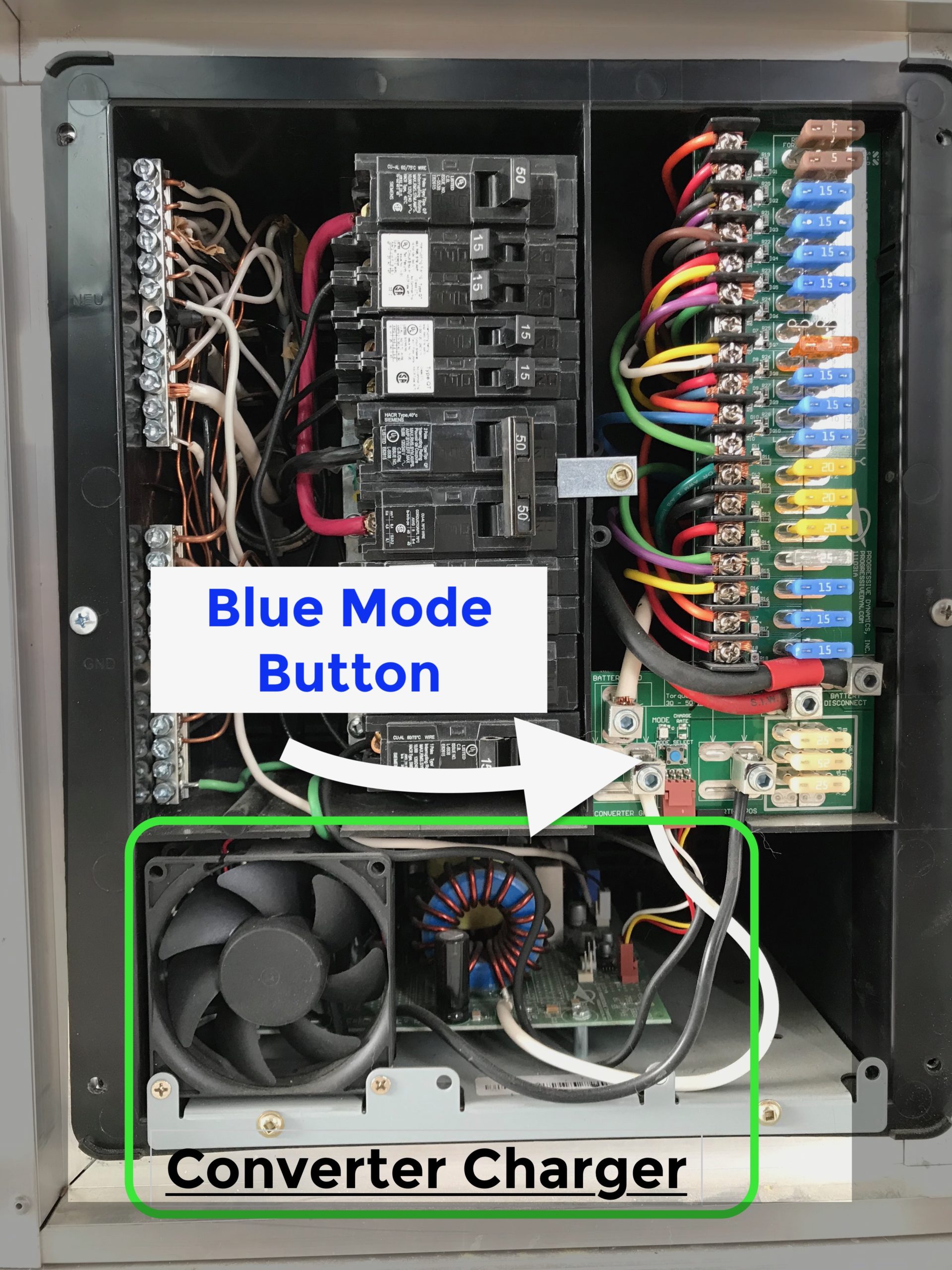The quick answer is no, even high end RV’s come with inadequate converters that can not charge your battery correctly!
Most people believe that the RV converter will completely charge your RV batteries, this is simply not true. From Progressive Dynamics website – A typical 125-AH RV or Marine battery will take approximately 80 hours to recharge at 13.6 volts. If that is true one would believe it will take 150 hours to charge 230AH battery bank, that is over 6 days! The problem is that no battery manufacturers tell us to charge a battery for 80-150 hours to achieve a full charge.
Our ATC trailers have the Progressive Dynamic Intel-power 4500 Series power center in them. Above is the standard (not Lithium) version. This converter has the Charge Wizard which will automatically switch between 3 modes. Boost mode is 14.4v – steady green light, Normal mode 13.6v – fast flash and Storage mode 13.2v – very slow flash. If you manual push mode and hold mode button the converter will stay in that mode for 2 hours before switching to auto mode, the unit will self determine the ‘correct’ mode. I don’t feel warm and fuzzy with auto mode myself. This unit will put out ~35A of charging into the battery/trailer useage.
The most common reason for short battery life is not charging the battery to 100%. The second most common is overcharging the battery. Converter chargers (what comes with most RV’s) do not have the ability to change voltages or provide temperature compensation to the charging voltage. There needs to be a way to adjust the Absorption and Float voltages independently for your battery’s requirements and adjust for wire size. Many RVs come with a thin gauge wire between the charger and the battery. This will give you voltage loss that needs to be accounted for. I have found where my charger my 28′ FB is putting out 13.8 volts and the battery was only getting 13.3 volts at 18 amps with factory 8 gauge wiring. There are many converters that only put out 13.6 volts! All deep cycle battery manufactures require 14.2-14.8 volts to charge a battery.
Lifeline Charging Voltage at Different Temperatures for a 12 Volt Battery*
| Temp °F | Absorption Voltage | Float Voltage | Temp °F | Absorption Voltage | Float Voltage | |
| -40 | 16.88 | 15.86 | 70 | 14.41 | 13.39 | |
| -30 | 16.58 | 15.56 | 77 | 14.30 | 13.30 | |
| -20 | 16.30 | 15.28 | 80 | 14.27 | 13.25 | |
| -10 | 16.03 | 15.01 | 90 | 14.15 | 13.13 | |
| 0 | 15.78 | 14.76 | 100 | 14.04 | 13.02 | |
| 10 | 15.54 | 14.52 | 110 | 13.95 | 13.00 | |
| 20 | 15.31 | 14.29 | 120 | 13.87 | 13.00 | |
| 30 | 15.10 | 14.08 | 130 | 13.81 | 13.00 | |
| 40 | 14.90 | 13.88 | 140 | 13.76 | 13.00 | |
| 50 | 14.72 | 13.70 | 150 | 13.73 | 13.00 | |
| 60 | 14.56 | 13.54 | 160 | 13.71 | 13.00 |
To correctly charge any deep cycle battery there needs to be some form of temperature compensation. I am sure you can imagine the temperature swing on an average day in the sun when a battery is in the black box of death (on the tongue of your trailer). You can see from Lifeline’s chart above, the only way to fully charge their battery at 30 degrees F is with 15.1 volts. This same voltage setting will give an extra 1.05 volts at 90 degrees F and dramatically shorten the lifespan of the battery.
Most RV converter chargers combine 3 stage battery charging into a dual stage hybrid process. This will lead to shorter life expectancy.
Next read – How do I charge my RV batteries?
